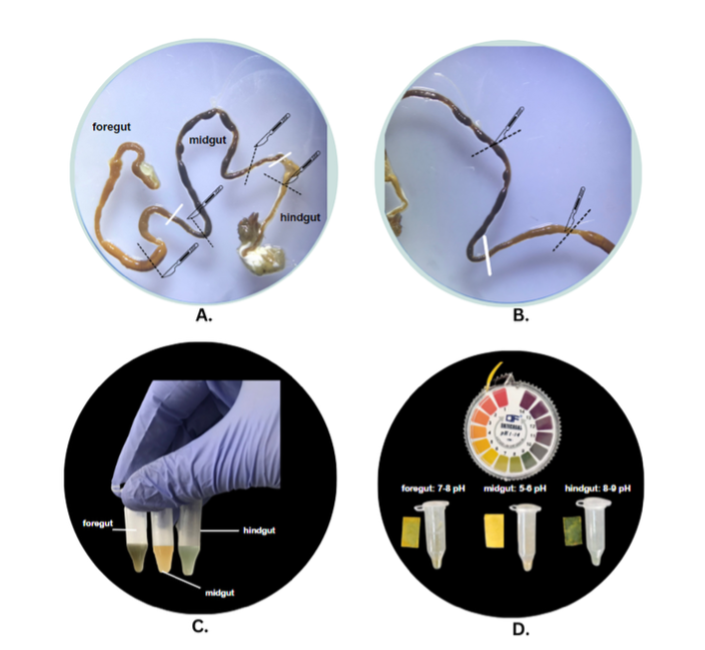VOLUME 18 (Supplement)

SciEnggJ 18 (Supplement) 270-276
available online: 31 July 2025
DOI: https://doi.org/10.54645/202518SupHMZ-36
*Corresponding author
Email Address: ffmaglangit@up.edu.ph
Date received: 25 August 2024
Dates revised: 09 October 2024;
20 December 2024;15 June 2025
Date accepted: 06 July 2025
ARTICLE
Evaluation of antibacterial activity of black soldier fly (Hermetia illucens L.) larval gut extracts
Science, University of the Philippines Cebu, Lahug, Cebu City,
6000, Philippines
The larvae of the black soldier fly (BSF), Hermetia illucens L., feed on various organic wastes, such as animal manures and food waste, which are often abundant in pathogenic microorganisms. BSF can thrive in such harsh environments, indicating that their gut microflora may possess a potent immune system that can produce a variety of bioactive metabolites, which may repress the growth of harmful pathogens. Nevertheless, the bioactivity potential of the gut microbiota of BSF larvae (BSFL) remains underinvestigated. In this work, we characterized the gut portions of the BSFL (i.e., foregut, midgut, and hindgut) and evaluated the bioactivity of microbial gut extracts against Escherichia coli and Bacillus subtilis. Ten strains were isolated: three from the foregut (JN1, JN2, JN3), three from the midgut (JA4, JA5, JA6), and four from the hindgut (JB7, JB8, JB9, JB10). All gut isolates showed zones of inhibition (ZOI) against B. subtilis (6.27–7.80 mm) and E. coli (6.20–7.33 mm), suggesting the presence of broad-spectrum antimicrobial compounds. Based on the 16S RNA sequence similarity, the isolates JN2 and JA4, with the largest ZOIs, are likely new members of the genus Bacillus, while JA4 belongs to the genus Providencia. The results highlight the potential of BSFL gut as a promising source of antimicrobial compounds, contributing to sustainable waste management and advancements in biotechnology.
© 2025 SciEnggJ
Philippine-American Academy of Science and Engineering